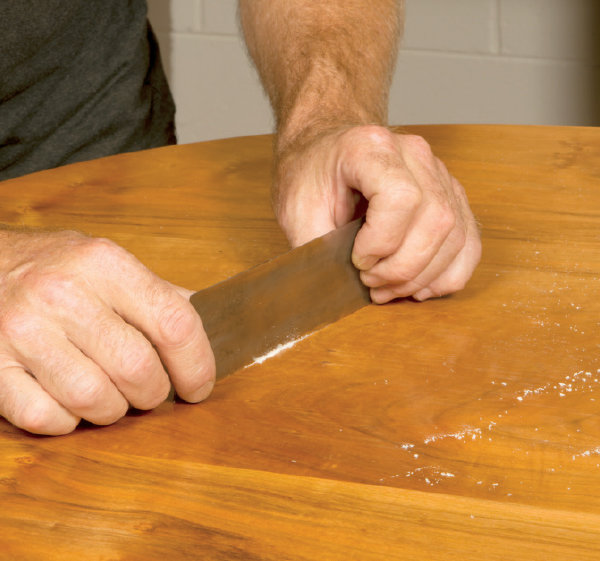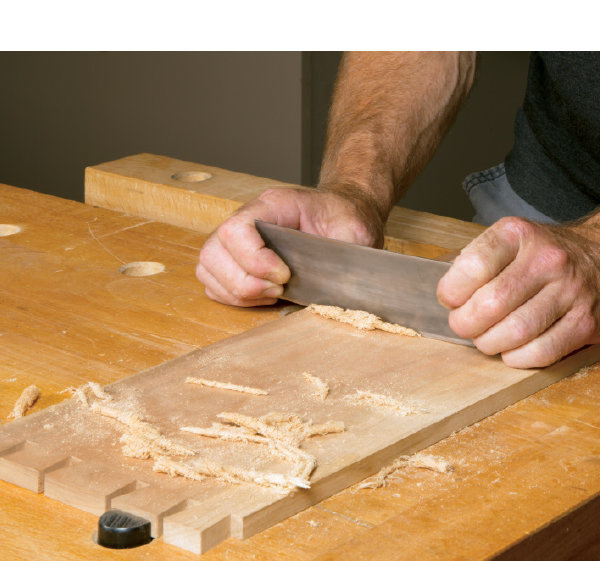Elevating Woodworking Finish with Cabinet Scrapers: A Sandpaper Alternative
 In the realm of woodworking, achieving a flawless finish is a hallmark of craftsmanship. While sandpaper is commonly used for smoothing surfaces, there exists a traditional yet highly effective alternative: cabinet scrapers. These versatile tools offer woodworkers a refined and efficient method to achieve exceptionally smooth surfaces, enhancing the overall quality of their projects. In this article, we’ll delve into the art of using cabinet scrapers as an alternative to sandpaper in woodworking.
In the realm of woodworking, achieving a flawless finish is a hallmark of craftsmanship. While sandpaper is commonly used for smoothing surfaces, there exists a traditional yet highly effective alternative: cabinet scrapers. These versatile tools offer woodworkers a refined and efficient method to achieve exceptionally smooth surfaces, enhancing the overall quality of their projects. In this article, we’ll delve into the art of using cabinet scrapers as an alternative to sandpaper in woodworking.
Cabinet scrapers are thin pieces of metal, typically rectangular or curved, with finely honed edges. Unlike sandpaper, which removes material through abrasion, cabinet scrapers work through a process known as “burnishing.” When properly used, they create shavings that leave behind an ultra-smooth finish.
 Preparing the Cabinet Scraper:
Preparing the Cabinet Scraper:
To optimize the performance of a cabinet scraper, it’s crucial to ensure it’s appropriately sharpened. Use a burnisher or a hardened steel rod to create a burr along the edge of the scraper. This burr is what effectively scrapes the wood fibers, creating a polished surface.
Surface Preparation:
Before using a cabinet scraper, ensure that the wood surface is free from dust, debris, and any rough spots. Scrub the surface lightly with a stiff brush to raise the wood fibers, allowing the scraper to work more effectively.
Holding and Using the Scraper:
Hold the scraper with both hands, gripping it firmly. Angle the scraper at about 45 degrees to the wood surface and apply downward pressure while pulling it toward you. Start with light pressure and adjust as needed to control the amount of material being removed.
Proper Technique:
To achieve the best results, move the cabinet scraper in smooth, overlapping passes, much like using sandpaper. Pay attention to the grain direction, as scrapers work most effectively when pulled parallel to the wood fibers. Avoid applying too much pressure, which can result in tear-out or uneven surfaces.
Surface Inspection:
As you work, periodically inspect the surface to gauge your progress. The goal is to create a smooth, glass-like finish that is free from scratches and tear-out. Adjust your technique and pressure as needed to achieve the desired results.

Versatility and Precision:
Cabinet scrapers excel at refining complex shapes and contours, making them invaluable for fine woodworking projects where sandpaper might struggle to reach intricate details.
Finishing Touches:
After scraping, you may choose to further refine the surface by using fine-grit sandpaper. This step can help remove any residual burrs and leave the wood exceptionally smooth.
Maintenance and Care:
Regularly maintain and sharpen your cabinet scrapers to ensure their optimal performance. A properly sharpened scraper with a well-formed burr will consistently yield exceptional results.
Cabinet scrapers offer woodworkers a traditional and effective means of achieving a flawlessly smooth finish on their projects. As an alternative to sandpaper, cabinet scrapers excel at producing refined surfaces, particularly on intricate details and complex shapes. By mastering the technique of using cabinet scrapers and incorporating them into your woodworking toolkit, you can elevate your craftsmanship and produce pieces that exude a level of quality and finesse that stands out. So, embrace the art of cabinet scraping and discover the satisfaction of creating woodworking masterpieces with a beautifully polished touch.

Comments
Add comment